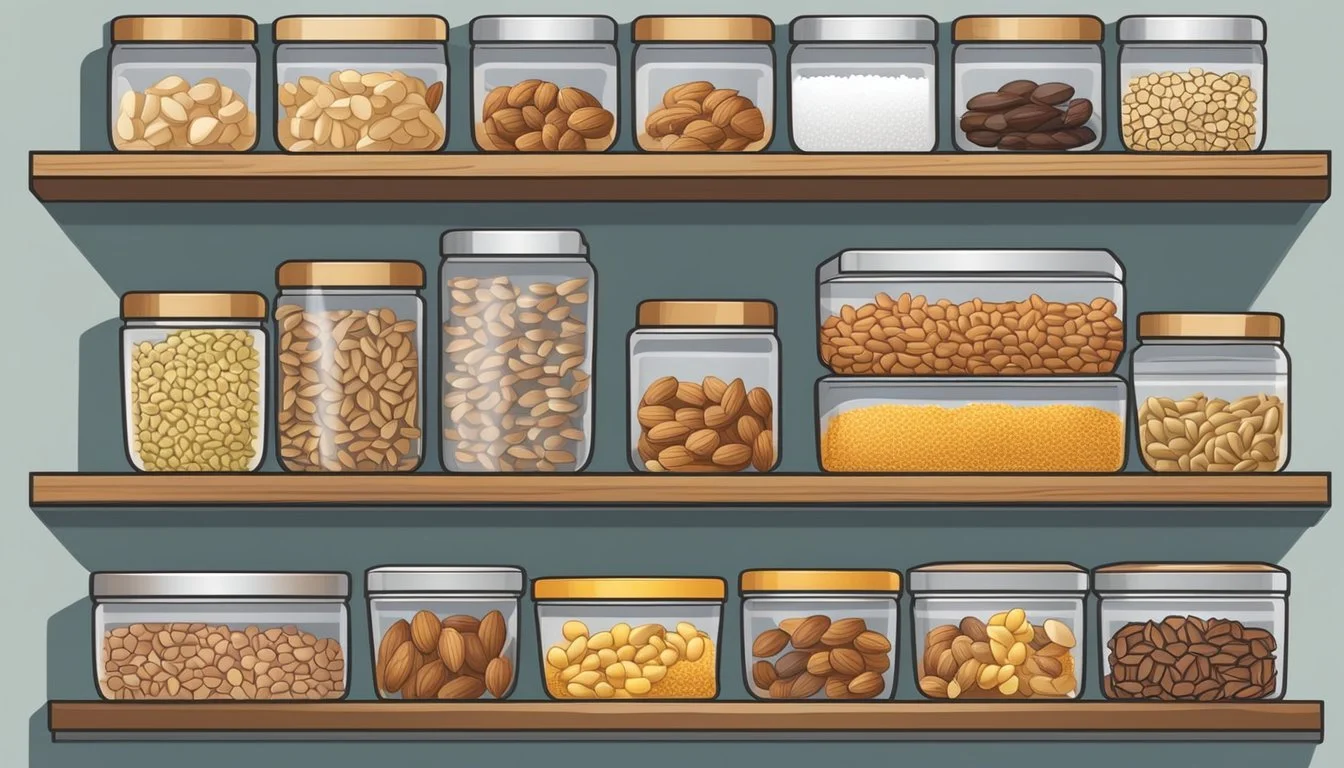How to Store Nuts and Seeds for Freshness
Prolonging Your Pantry Staples
Storing nuts and seeds properly is crucial for maintaining their freshness and nutritional value. These pantry staples, packed with healthy fats, proteins, and various vitamins and minerals, can quickly become rancid if exposed to heat, light, and air. It is essential to understand the correct storage methods to ensure that nuts (What wine goes well with nuts?) and seeds retain their flavor, texture, and health benefits for as long as possible.
Refrigeration is one of the best ways to extend the shelf life of nuts and seeds. By keeping them in a cold environment, oxidation is slowed down, and rancidity is prevented. For optimal results, nuts and seeds should be placed in air-tight glass jars or containers, which further protect them from moisture and odors that can compromise their quality.
For those who buy in bulk or do not plan to use their nuts and seeds quickly, freezing offers an even longer-term solution. When stored in the freezer in their original packaging or a freezer-safe, air-tight container, nuts and seeds can maintain their quality for six months to a year or even longer, depending on the variety. This method is particularly useful for preserving the integrity of oils found in nuts and seeds, which are susceptible to spoilage at room temperature.
Understanding Nuts and Seeds
Nuts and seeds offer significant nutritional benefits and diverse flavors, but they are also susceptible to spoilage due to their high oil content. Proper storage is essential to maintain their quality.
Nutritional Value
Nuts and seeds are lauded for their high content of unsaturated fats, fiber, and protein, which contribute to their status as heart-healthy snacks. They're also rich in various nutrients which include vitamins and minerals essential for the body's functioning. For instance, almonds are high in Vitamin E, cashews have a wealth of magnesium, while walnuts are a good source of omega-3 fatty acids.
Varieties and Characteristics
There is a wide variety of nuts and seeds, each with distinct characteristics. Here are a few notable examples:
Almonds: Available as both sweet and bitter, often consumed raw or roasted.
Pecans: Known for a buttery flavor and used in desserts.
Cashews: Recognized for their soft texture and commonly used in culinary dishes.
Walnuts: Contain a high amount of healthy fats and are often added to salads.
Pistachios: Distinct green hue and often eaten as a snack.
Hazelnuts: Popular in confections, with a distinctive sweet flavor.
Pine nuts: Typically used in pesto and have a subtle, buttery taste.
Factors Contributing to Spoilage
The primary factors leading to spoilage of nuts and seeds include light, heat, air, and moisture. These factors can accelerate the process of rancidity, which occurs due to the oxidation of the high oil content in nuts and seeds. When nuts and seeds become rancid, their flavor becomes unpleasant and their nutritional value can decrease. Ensuring nuts and seeds are stored in conditions that minimize their exposure to these spoilage factors is key to maintaining freshness.
Storing Nuts and Seeds for Freshness
Maintaining the freshness of nuts and seeds requires attention to storage conditions, which can significantly affect both flavor and nutritional value. Proper storage methods vary depending on the time frame and the state (raw or shelled) of the nuts and seeds.
Ideal Storage Conditions
Nuts and seeds thrive in environments that protect them from oxygen, light, heat, and moisture. They are best kept at a consistent, cool kitchen temperature, away from any sources of heat like stovetops or sunlight. An airtight container is essential to keeping air and moisture out, ensuring the contents remain fresh and their delicate flavors intact.
Short-Term Storage Solutions
For short-term storage, lasting a few weeks to a month, the pantry can be an acceptable location for nuts and seeds. They should be stored in:
Airtight containers: Preferred materials include glass jars or mason jars with tight-sealing lids.
Plastic bags: If airtight containers are not available, resealable plastic bags may be used, with excess air squeezed out.
Long-Term Storage Techniques
For periods extending beyond a month, fridge or freezer storage is recommended:
Refrigerator: Use airtight containers for up to six months, ensuring they are not exposed to strong odors that nuts can absorb.
Freezer: Nuts and seeds can be frozen for up to a year. Original packaging or freezer-safe containers are ideal choices to prevent freezer burn.
Special Considerations for Raw and Shelled Varieties
Raw and shelled nuts are more susceptible to spoilage due to their high oil content. They should be:
Frozen: To preserve freshness for as long as possible, potentially extending their life up to 1 1/2 years for unshelled varieties.
Stored separately: Different types of nuts and seeds should be stored in individual containers to maintain flavor profiles and prevent the transfer of flavors or odors.


